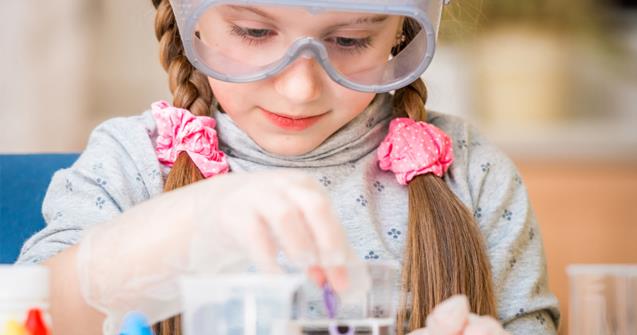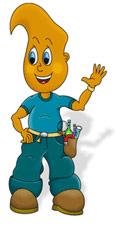
Globule wonders...
Why do certain liquids mix together while other don't?
Experiment: Mixtures and density
Hypotheses: Ask children if they have ever noticed that salad dressing ingredients separate when we let the dressing settle.
Why do they think this is?
Material:
- Water
- Vinegar
- Vegetable oil
- Food colouring (green and red, or two other colours)
- 4 transparent glasses
- 2 spoons
Manipulations:
PART 1
- Pour a small quantity of vinegar in a glass. Add a few drops of green food colouring. Mix well.
- Pour a small quantity of water in another glass. Add a few drops of red food colouring. Mix well.
- Pour the contents of one of the glasses into the other glass. Stir. The vinegar and the water mix well. We are unable to distinguish one from the other.
PART 2
- Pour a small quantity of vinegar in a glass. Add a few drops of green food colouring. Mix well.
- Pour a small quantity of oil in another glass.
- Pour the contents of one of the glasses into the other glass. Stir. The vinegar and oil seem to be mixing together. However, if we wait a few minutes, the liquids separate and rest one on top of the other.
Explanations: Certain liquids are heavier, "dense", than others. When you attempt to mix two liquids which have different densities, they separate when you stop mixing them. The "heavier" liquid deposits itself on the bottom and the "lighter" liquid deposits itself on top. There exists a wide range of liquids with various densities. Molasses is most dense while alcohol is the least dense liquid.
Experiment: Density
Material:
- Molasses
- Corn syrup
- Vegetable oil
- Dishwashing liquid
- Water + Red food colouring
- Alcohol + Blue food colouring
- 1 transparent glass
Manipulations:
- Your daycare worker will prepare a demonstration involving a pile of liquids.
- In a glass, she pours various liquids VERY GENTLY. She begins with molasses. She then adds corn syrup followed by vegetable oil and dishwashing liquid. She finally adds water with red food colouring in it and alcohol with blue food colouring in it.
Explanations: Certain liquids are heavier, "dense", than others. When you attempt to mix two liquids which have different densities, they separate when you stop mixing them. The "heavier" liquid deposits itself on the bottom and the "lighter" liquid deposits itself on top. There exists a wide range of liquids with various densities. Molasses is most dense while alcohol is the least dense liquid.
Angélique Boissonneault
has a Bachelor's Degree in Biological Science. She has worked in a laboratory and tested her knowledge. She has taught Math, Chemistry, and Physics. She has also developed a simplistic and innovative approach designed to introduce young children to scientific experiments, old and new. She created her friend Globule. This character is sometimes red, and sometimes white. He guides little ones through their scientific experiments and discoveries. It is clear to see Angélique is passionate about children and science. Globule's Approach.

 Home
Home Theme activities
Theme activities
 Babies and toddlers
Babies and toddlers
 Arts and crafts
Arts and crafts
 Science
Science
 Creative recipes
Creative recipes
 Tips and tricks
Tips and tricks
 Special needs
Special needs
 Extra activities
Extra activities
 Educ-TV
Educ-TV
 Newsletter
Newsletter  Online store
Online store Educatall club
Educatall club

